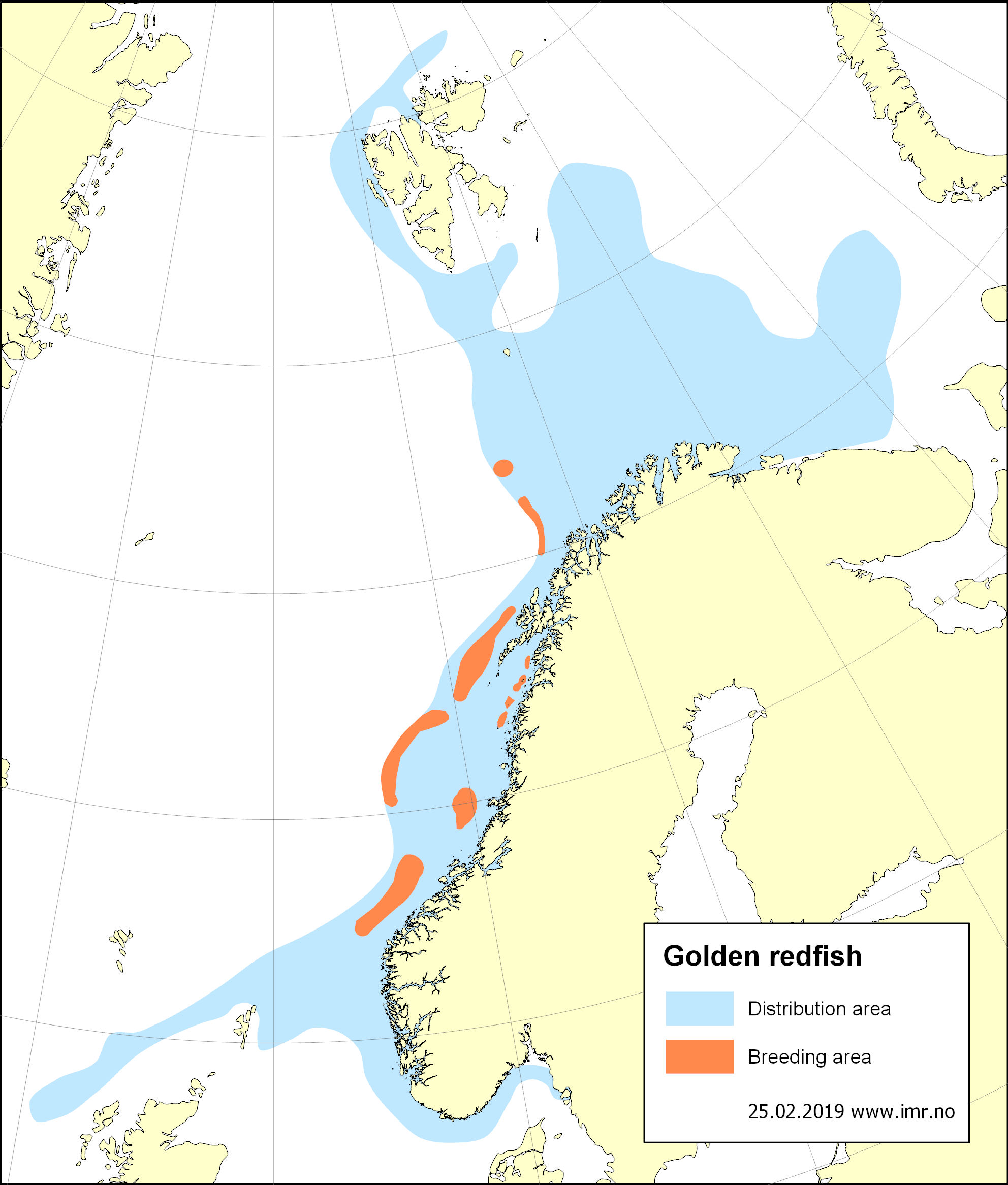Golden redfish

Golden redfish can reach 1 meter and live for 60 years.
Photo: Merete Fonn / Institute of Marine ResearchThe breeding area stretches along the continental shelf from Shetland and north to Andøya, with Storegga, Haltenbanken and Vesterålen as the main areas.
Golden redfish grows larger than beaked redfish and can be found closer to the coast. However, the stock is much smaller and there is currently no directed fishery, except for handlines in the summer months.
Golden redfish live at depths of 100–500 m, along the continental shelf, the coast and in certain fjords. Golden redfish can be found northwards to west of Svalbard, but fishable numbers north of the Tromsøflaket and Bjørnøya areas are rare. Like beaked redfish, golden redfish releases its living, 4-6 mm long, larvae along the continental shelf from Shetland to Andøya, but the areas are more defined, with Storegga, Haltenbanken and Vesterålen as hotspots. Larvae are released in April and May, but mating takes place in autumn. Therefore, aggregations of golden redfish in these area may exclusively consist of females.
Young golden redfish feed solely on zooplankton and thereafter progress to increasingly larger prey, krill, capelin, herring and finally gadoids. Themselves, small golden redfish fall prey to cod and halibut. At two years of age golden redfish is 10–12 cm long and grows by a further 2 cm a year until sexual maturity. Half of the golden redfish reach maturity at 11 or 12 years, corresponding to a length of 30–35 cm.
Up to now, climate change had no noticeable effects on age at first maturity, productivity or distribution. However, in recent years, large bycatches were registered as far north as Bear Island.
Published: 18.12.2018 Updated: 27.02.2025


